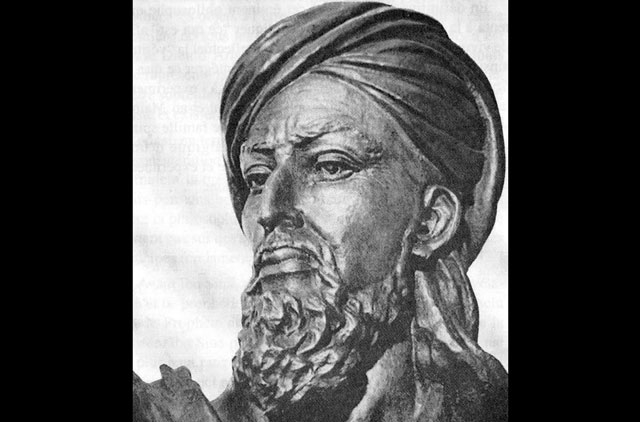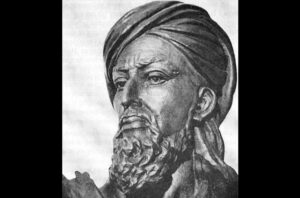Abu Ali Al Hussain Ibn Abdullah Ibn Sina, better known in prominent Western sources by his Latinised name, Avicenna, was a leading Persian physician who became one of the most famous and influential of all Muslim philosopher-scientists.
Born in 980 in Bukhara, in today’s Uzbekistan, Ibn Sina earned royal favour for treating the kings of Bukhara and Hamadan, in today’s Iran. A master diagnostician who honed his immense skills in areas that were neglected by others, he also combined his scientific knowledge with philosophical inquiries, detailed in his encyclopedic studies, “Al Qanun fil-Tibb” (The Canon of Medicine) and “Kitab Al Shifa” (Book of Healing). His complex philosophical investigations combined Aristotelian and Platonic perspectives with Muslim theology as he developed a sophisticated paradigm that divided all knowledge into the theoretical (mathematics, physics, chemistry, astronomy and metaphysics) and practical (philosophy, ethics, economics and politics). In fact, his rationalistic account of the nature of God and Being led him to conclude that there was a place for the corporeal world, along with one for the spirit. A measure of the esteem that many held him in is that his portrait was prominently displayed in the main hall of the Faculty of Medicine at the University of Paris, while his grave, in Hamadan where he died in 1037, became a prominent tourist attraction.
Erudite physician
Ibn Sina was 13 when he began his medical studies and quickly earned a good reputation. When the sultan of Bukhara, Nuh Ibn Mansour, required medical attention, Ibn Sina treated the ruler successfully. Soon, he had access to the sultan’s vast library — and its rare manuscripts — which facilitated his research activities. The sultan’s successor, Ali Ibn Shams Al Dawlah, asked Ibn Sina to continue as a vizier, but that was not to be since the physician favoured his brother ‘Ala’ Al Dawlah.犀利士 In hiding to avoid reprisal as well as compose the “Kitab Al Shifa”, he was arrested and imprisoned, but somehow managed to escape to Isfahan — probably with the help of ‘Ala’ Al Dawlah’s men — disguised as a Sufi.
In Isfahan, Ibn Sina produced several important books, the “Kitab Al Najat” (Book of Salvation), “Al Mantiq”, translated as “The Propositional Logic of Ibn Sina”, and “Al Isharat wal-Tanbihat” (Remarks and Admonitions). His opus, however, was “Al Qanun fil-Tibb”, which was translated into Latin by Gerard of Cremona in the 12th century and became one of the most important medical books ever written. It served as the medical authority throughout Europe for more than 600 years. In his medical text, Ibn Sina identified such contagious diseases as tuberculosis and, several centuries before Louis Pasteur, homed in on the probability that diseases most likely spread through water and soil. He even delved into a person’s emotional health long before biofeedback techniques were introduced. Among Ibn Sina’s other medical discoveries were the description of meningitis, the different parts of the eye and heart valves, and how nerves contributed to muscle pain. In fact, the advancements he made in anatomy, gynaecology and paediatrics were so sophisticated that his book soon became the predominant textbook used in European medical schools well into the 17th century. Western medicine was thus largely based on Ibn Sina’s work even if tremendous advances have occurred since the pioneering work was first composed.
Reason and reality
The way Ibn Sina arrived at ultimate truths was revelatory and deserved attention. In fact, his conception of reality and reasoning revolved around God. As the principle of all existence, he “reasoned” God is pure intellect, from whom everything else emanates. Still, because of “necessities”, man was called upon to use real concepts that formed what we now as human knowledge. Man was thus called upon to develop and use the rules of logic to serve his needs.
Of course, the fundamental concepts of logic that he relied upon were drawn from the master, Aristotle, whose views Ibn Sina welcomed. What he added to Aristotelian concepts was the view that man’s needs to gain knowledge were essential since that was crucial to human progress. Although all intellect emanated from God, he reasoned, a man’s capacity to gain knowledge determined his outlook. Towards that end, men improved their lives by developing a balance between their physical and spiritual needs, with faith being one of several key ingredients that sustained life.
Ibn Sina rationalised God as the highest point above the active or pure intellect, and saw no contradiction with man’s quest for human knowledge, since that would allow him to understand deity. Every human faculty that defined experiences and explained them logically led to the human soul, which allowed one to grasp the fundamental structure of reality. The pure intellect thus emanated from that source and became available to human thought through reason or, in the case of prophets, intuition. Through this conception, therefore, Ibn Sina established close relationships between “logic, thought, experience, the grasp of the ultimate structure of reality and an understanding of God”. As the highest and purest intellect, consequently, God was/is the source of all the things that exist in the world and it behoved the believer to accept the notion that everything derived from that pure high intellect. What was left to do, Ibn Sina concluded, was for man to grasp the pure intellect through rationality.
The existence of God
In the “Metaphysics” section of his “Kitab Al Shifa”, Ibn Sina presented a detailed and comprehensive argument for the existence of God, which went beyond Aristotelian discussions that HE was necessary as well as possible. Logic dictated that if any presupposition for the necessary existence was valid because, it was equally logical to surmise, a merely possible existence did not require prior existence. Such a possibility thus required something else to lead to its existence. In other words, for a possible existence to be existent — or for something to simply exist — something else was necessary. Moreover, and this was the epitome of both Aristotelian philosophy as well as Ibn Sina’s reasoning on the subject, that required “something else” cannot possibly be another “merely possible existence since the latter would itself stand in need of some other necessitation to bring it about”. One could play an infinite regression game without explaining why the merely possible existence existed. Ibn Sina answered this regression game well when he suggested that an “essential cause and its effect will coexist and cannot be part of an infinite chain”, since the “nexus of causes and effects must have a first cause, which exists necessarily for itself: God”.
An equally elegant argument proposed by Ibn Sina to further explain the existence of God and His infinite presence with man was his examination of the human soul. In “Al Shifa”, once again, he stressed that the soul must be an intangible substance because man’s intellectual output was indivisible. By this, he meant that a person was able to have and articulate a coherent thought, which was indigenous and whole, rather than piecemeal and devised by multitudes. Coherent thoughts were developed by a single, unified intellect rather than, for example, one intellect proposing a part of the thought, and another soul generating a separate part of the same thought, and yet a third intellect developed a third distinct part of the same idea. A coherent thought was, and cannot be but, an indivisible idea that can only be present in or generated by a single intellect. As such, the coherent idea differed from the physical matter that, naturally, can be divisible among many parts, each distinct from the other. Thus, an indivisible intellect that led to a coherent thought cannot possibly be material and must be spiritual, since those are the only two available possibilities.
In an ultimate twist, Ibn Sina went further, insisting that the non-material soul was immortal, because the decay and destruction of the body did not affect the soul. He set out to prove that the soul could not possibly decay since it cannot be caused by anything material. Only composite objects were subject to destruction, whereas a soul, by virtue of its spiritual state, cannot be a subject for destruction. No coherent intellect generated by a soul could decay or be destroyed. Sceptics pretended that man could eventually recreate the soul as a chemical compound, without solving the Ibn Sina conundrum, namely, how a chemically induced soul could preserve its unity and generate a coherent non-material intellect that ensured its indestructibility.
Legacy to civilisations
Ibn Sina was a bon vivant in every sense of the term, and it may be fair to state that his brilliant mind won him many friends, though his flaunting of puritanical conventions earned him enemies too. For Antony Flew, a renowned British philosopher, Ibn Sina was “one of the greatest thinkers ever to write in Arabic”, while Sir William Osler, a Canadian physician and professor of medicine, described Ibn Sina in 1913 as “the author of the most famous medical textbook ever written”. Osler added that, as a practitioner, the Bukharan was “the prototype of the successful physician who was at the same time statesman, teacher, philosopher and literary man”, which perfectly expressed how contemporary scholars perceived him.
Ibn Sina stressed the importance of gaining knowledge, as he developed a theory of wisdom based on four specific faculties, which included perceptions of one’s senses, the ability to retain whatever knowledge one conquered, the intellectual ability to imagine and, finally, the skill to estimate the value of such knowledge. Ultimately, imagination played a key role for the intellect, since such a capability allowed a “reasoning mind” to compare and construct other images that, in turn, ensured one’s access to what were common ideas. Once again, it was important to emphasise that Ibn Sina’s reasoning was motivated by the idea that man’s ultimate object to acquire unlimited knowledge was God, the pure intellect who created mortals in his image.
For Dr Ibn Sina, God was and would always remain the first cause and, as such, was both essence and existence. Over the years, critics of Ibn Sina affirmed that the Bukharan was a mystic, but this was not the case. Remarkably, his faith was deeply philosophical, which earned him many followers. Few Muslim philosophers exercised as much influence over indigenous thinkers — Arab and non-Arab — as over European intellectuals especially during medieval times. At least two leading Catholic saints, Saint Thomas Aquinas — an Italian Dominican priest who was the foremost classical proponent of natural theology — and Albert the Great, Aquinas’s teacher, based their own commentaries on the soul on Ibn Sina’s ideas and through him relied on the lost works of Aristotle. In fact, this kind of emulation was considered so dangerous that works attributed to Aristotle, which were translated by Ibn Sina and other Muslim scholars, were banned in 1210 by a Christian Synod held in Paris. Aristotle’s ideas survived the dark ages as did Ibn Sina’s, whose contributions to logic, metaphysics and medicine proved to be so valuable that coherent intellects could not but bow to his wisdom.
List of works
- Ibn Sina wrote an autobiography, “Sirat Al Shaykh Al Ra’is” (The Life of Ibn Sina), which was supplemented by material from one of his students, Abu ‘Ubayd Al Juzjani, and was edited and translated into English by W. E. Gohlman, Albany, New York: State University of New York Press, 1974. His two key books were:
- “Al Qanun fil-Tibb” (Canon on Medicine), ed. I. a-Qashsh, Cairo, 1987; and
- “Al Kitab Al Shifa” (The Book of Healing), ed. I. Madkour, Cairo: Al Matba‘ah Al Amiriyyah, 1952.
Source: https://gulfnews.com/general/ibn-sina-the-philosopher-scientist-1.1184513




